THE IMPLICATIONS OF THE CAMBRIAN
EXPLOSION FOR EVOLUTION
Copyright 1998 by Emerson Thomas McMullen
(The double-spaced text is about three pages long.)
 Abstract
Abstract
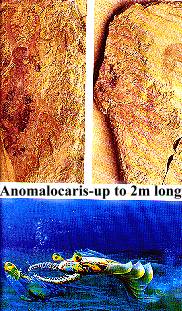
Evolution does not explain the abrupt appearance of complex forms of life early
in the fossil record or these fossils' unequaled diversity. This early complexity and
diversity should not have occurred if life slowly developed from some kind of
simple beginning, as evolutionary theory predicts. Instead, scientists have found
that these early fossils exhibit more anatomical body designs than exist today, and
that early animals, the trilobites, had eyes as fully developed as their counterparts
today. Researchers correctly termed this the "Cambrian explosion."(1)
The implication of the Cambrian explosion of diverse, fully functional, and multicellular
life is that evolutionary theory is falsified.
Cambrian Fossils had Great Diversity
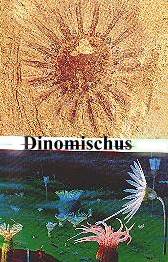
There are two places in the world that have an abundance of early (Cambrian)
fossils; one is the Burgess Shale in the Canadian Rockies and the other is the
Chengjiang site in China. (The color pictures depict some of the animals found
there.)
Stephen J. Gould has written a popular book, Wonderful Life, on the diversity of
the fossils at the Burgess Shale. In it he points out that these Cambrian fossils
include "a range of disparity in anatomical design never again equaled, and not
matched today by all the creatures in the world's oceans."(2)
Further, these fossils contain some twenty to thirty kinds of arthropods that cannot be placed in any
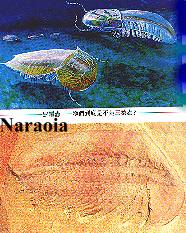 modern group. The modern arthropods, consisting of almost a million species, can
all fit into four major groups. But "one quarry in British Columbia, representing the
first explosion of multicellular life, reveals more than twenty additional arthropod
designs."(3) Today there are about 38 phyla in existence, but the Canadian,
Chinese and other Cambrian sites reveal over fifty phyla.(4)
modern group. The modern arthropods, consisting of almost a million species, can
all fit into four major groups. But "one quarry in British Columbia, representing the
first explosion of multicellular life, reveals more than twenty additional arthropod
designs."(3) Today there are about 38 phyla in existence, but the Canadian,
Chinese and other Cambrian sites reveal over fifty phyla.(4)
There has been a decrease in diversity (probably due to global catastrophes). This is the reverse of
what evolutionary theory predicts.
Early Life was Fully Adapted
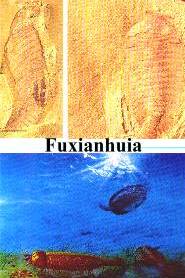
Besides diversity, the Burgess Shale shows exquisite detail, right down to "the
last filament of a trilobite's gill," or the last meal in a worm's gut.(5)
Yet, as detailed and diverse as the Burgess Shale fossils are, the Chengjiang site has even greater
detail, and is earlier. According to Paul Chien, the chairman of the biology
department at the University of San Francisco, the preservation is such that internal
organs, nerves, and even the water ducts of jellyfish are observable.
The remarkable preservation of Cambrian fossils enables scientists to examine
important features, an example being the use of a scanning electron microscope on
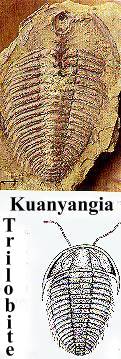 the eyes of Cambrian trilobites. Researchers have found striking similarities
between the compound eyes of these trilobites and those of modern insects. For
instance, according to Riccardo Levi-Setti, "Trilobites could see in their immediate
environment with amazingly sophisticated optical devices in the form of large
composite eyes." He reports that "The number of individual optical elements in the
holochroal [compound] eye could vary from approximately one hundred to more
than fifteen thousand in a single eye, a range not very different from that found in
modern insects."(6)
No wonder he calls trilobites "Butterflies of the Seas."
the eyes of Cambrian trilobites. Researchers have found striking similarities
between the compound eyes of these trilobites and those of modern insects. For
instance, according to Riccardo Levi-Setti, "Trilobites could see in their immediate
environment with amazingly sophisticated optical devices in the form of large
composite eyes." He reports that "The number of individual optical elements in the
holochroal [compound] eye could vary from approximately one hundred to more
than fifteen thousand in a single eye, a range not very different from that found in
modern insects."(6)
No wonder he calls trilobites "Butterflies of the Seas."
The conclusion is that the eye, a complex visual system, was fully formed and
functional extremely early in the fossil record. Obviously, this is not predicted by
evolutionary theory.
Life began Complex, not Simple
Lastly and most importantly, Chinese scientists at Chengjiang have made a new
discovery, the Yunnanzoon, a chordate.(7)
The Phylum Chordata is the most complex
 animal group of all and includes fish and mammals. So the chordates were present
at the beginning of multicellular life and did not appear later as is predicted by
evolutionary theory.
animal group of all and includes fish and mammals. So the chordates were present
at the beginning of multicellular life and did not appear later as is predicted by
evolutionary theory.
Life did not start out simple and evolve into more complex and diverse animals;
it was complex and diverse right at the beginning. This contradiction between the
fossil data and the predictions of evolutionary theory falsifies the theory. The
evidence from the Cambrian explosion is that evolution simply cannot be true.
Acknowledgments
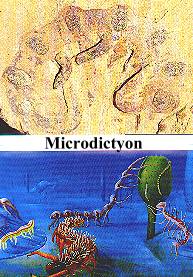

The pictures of the fossils are from THE CHENGJIANG BIOTA, a Unique
Window of the Cambrian Explosion, by J.Y. Chen, G.Q. Zhou, M.Y. Zhu, and K.Y.
Yeh, ISBN 957-8503-47-4. The color paintings are from Chinese postcards derived
from this book. The opening picture is from my fossil collection. Sharon Ann
McMullen did the word processing.
References
1. "Explosion" is the correct term to describe this abrupt appearance of diverse and complex life.
See, for example, D.E.G. Briggs, et. al.: ". . . the appearance of diverse shelly fossils near the base
of the Cambrian remains abrupt and not simply an artifact of inadequate preservation." This
quote is from The Fossils of the Burgess Shale (Washington, D.C.: The Smithsonian Press, 1994)
p. 40.


2. S. J. Gould, Wonderful Life, The Burgess Shale and the Nature of History (New York: W. W.
Norton Co., 1989) p. 208.
3. Ibid, p. 25.
4. Interview with Paul Chien, "Explosion of Life," Real Issue, 1997, 15:1, 8-10. The
paleontologist Alan Cheatham provides further evidence of the abrupt appearance of life as R. A.
Kerr reports in "Did Darwin Get It All Right?" Science, 1995, 267:1421-1422.
5. Wonderful life, p. 24.
6. Levi-Setti, Riccardo, Trilobites, Second Edition (Chicago: The University of Chicago Press,
1993) pp. 1 and 34 respectively.
7. Chen, J.Y., Dzik, J., Edgecombe, G.D., Ramskold, L., and Zhou, G.Q., A Possible Early
Cambrian Chordate, Nature, 377(26): 720-722 (1995).
modern group. The modern arthropods, consisting of almost a million species, can
all fit into four major groups. But "one quarry in British Columbia, representing the
first explosion of multicellular life, reveals more than twenty additional arthropod
designs."(3) Today there are about 38 phyla in existence, but the Canadian,
Chinese and other Cambrian sites reveal over fifty phyla.(4)